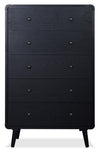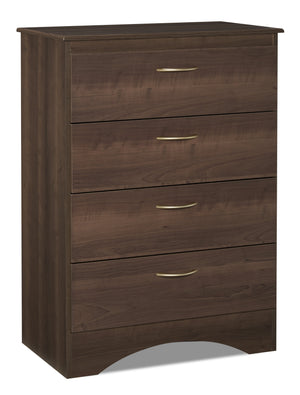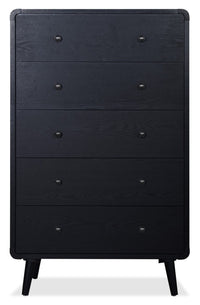Width: 31.61" (80.3 cm) Height: 51.18" (130.0 cm) Depth: 15.55" (39.5 cm)
Width: 33.98" (86.3 cm) Height: 48.03" (122.0 cm) Depth: 17.91" (45.5 cm)
140.14 lbs (63.6 kg)
1 Year
| Unique Features |
|---|
|
| Care Instructions |
|---|
Nitrocellulose (NC) Lacquer Paper Laminate |
| General Details | |
|---|---|
| Finish Colour | Black |
| Construction Details | |
| Primary Construction Material | Medium Density Fibreboard (MDF), Particleboard, Poplar, Rubberwood Particleboard is created by compressing wood chips and resin together, producing an affordable and stable wood alternative. This man-made product is a great base for veneers, laminates and other finishes. Used for its durability and affordability, poplar is often a component in wooden utility products like pallets and furniture frames. However, poplar's uniform texture and even grain creates a smooth look and feel for decorative use. Rubberwood, also known as parawood or Asian hardwood, is one of the most durable and eco-friendly woods in the furniture market today. Once the tree's latex sap is collected for other industries, rubberwood is recycled into home furnishings. The dense grain makes it stable and strong, and the naturally light undertone accurately holds the intended stain colour. |
| Finish Method | Nitrocellulose (NC) Lacquer, Paper Laminate Originally developed as a substitute for shellac, NC lacquer comes from natural fibres and is combined with other materials to produce a clear finish. This lacquer has exceptional clarity, depth and protective properties. Sustainable and resistant to wear, the paper laminate finish provides a beautifully stylish touch. |
| Construction Method | Mortise and Tenon, Dowel Joint, Corner-Blocking, Finger Joint Used in woodworking for centuries, a mortise and tenon joint is a secure method to hold a furniture frame together. These joints are resistant to warping thanks to their simple peg-in-hole construction. A dowel joint uses a thin cylinder of wood to reinforce pieces of wood joined together. It ensures a neat, hidden finish and an incredibly strong joint, without the use of nails or glues. An extra block of wood is added to each corner of the furniture’s frame for additional support. Known as corner-blocking, this technique helps to brace your furniture for enduring stability. Finger joints, also known as tongue and groove joints, are used in furniture construction for a robust bond. The tongue on one board is shaped to fit precisely into the groove on another board, securing the furniture piece together. |
| Hardware | Metal drawer knobs. |
| Storage Details | |
| Storage Options | Keep bedroom essentials tucked away in the five spacious drawers. |
| Number of Drawers | 5 |
| Drawer Construction | English Dovetailing Dovetailing is a woodworking technique commonly used to put drawers together. Tight fitting dovetails resist the wood's natural tendency to twist and warp over time, meaning your drawers will remain functional for as long as you own them. |
| Drawer Glides | Side-Mounted Metal Ball-Bearing Situated on both sides of the drawer, these metal glides move smoothly thanks to ball bearings tucked inside each slide. These glides are strong, and will support even the heaviest junk drawer. |
| Mirror Details | |
| Orientation | Vertical |
| Additional Details | |
| Function | Storage |
| Sold Separately | Matching Milan dresser, nightstand, mirror and choice of bed. |
| Safety Details |
|
| Additional Information | Assembly required. |
| Manufacturer's Warranty | 1 Year |
| Product Weight Limit (lb.) | 240 |



















